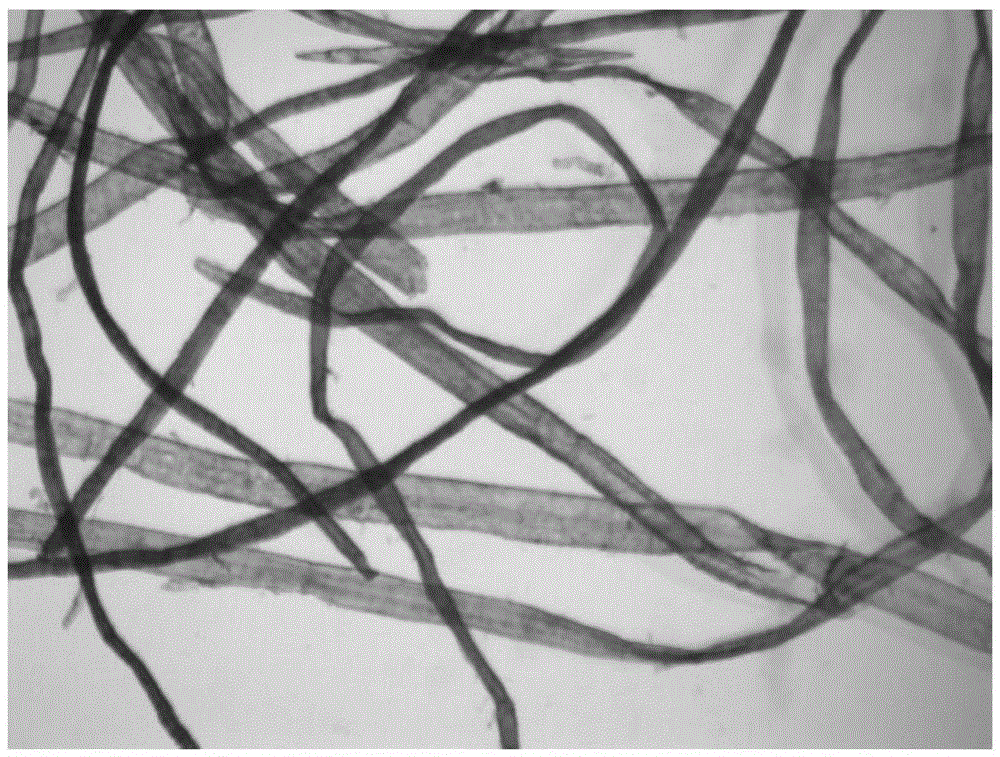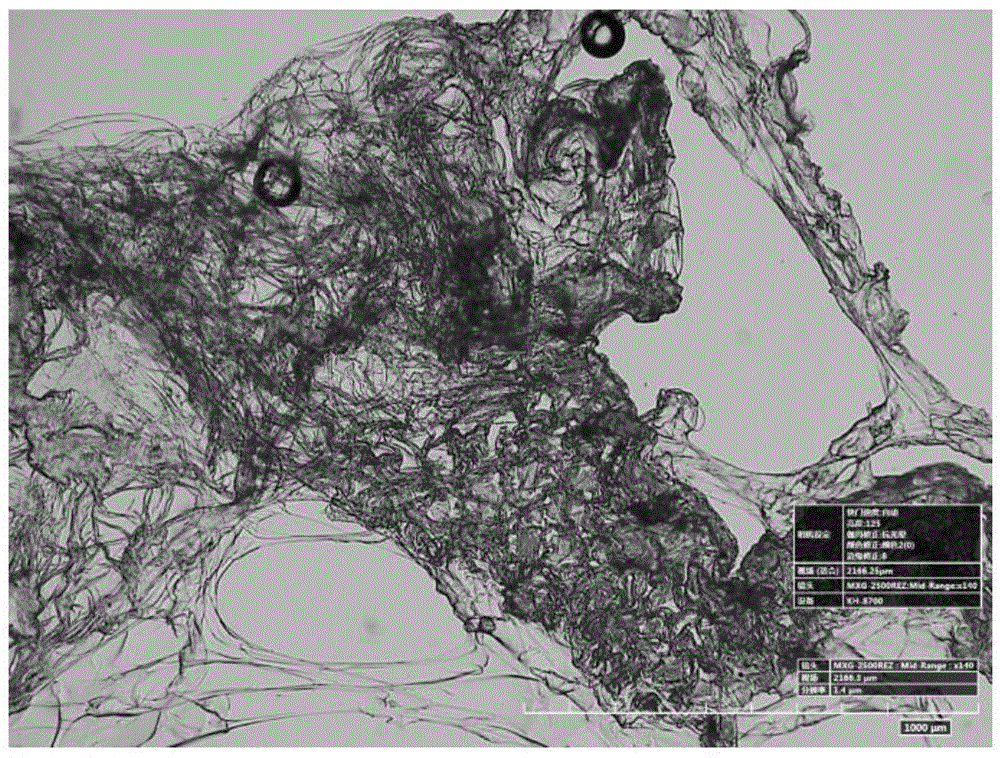Method for reusing leftover bits and pieces of diaper
A technology for scraps and diapers, applied in the field of pulp and paper making, can solve problems such as difficulty in removing superabsorbent resin, and achieve the effects of improving social and economic benefits, saving energy and resources
- Summary
- Abstract
- Description
- Claims
- Application Information
AI Technical Summary
Problems solved by technology
Method used
Image
Examples
Embodiment 1
[0036] Step 1, dissolving the scraps of diapers in water after pulverizing them, then adding 8% aluminum chloride of the mass of the scraps of dry diapers, fully stirring, and then using a 991738-type standard pulp decomposer for 10,000 revolutions to obtain a fiber slurry;
[0037] Step 2, making paper from the fiber slurry treated in step 1. Use the ZQJ1-B paper pattern picker to make paper. First, add the decomposed slurry to the paper sample extractor, add water until the concentration of the slurry on the net is 0.3g / L, stir the fiber slurry evenly with a stirrer, drain the water to make it a wet paper web, and then use a pressure roller to manually Squeeze, and finally put it into a paper dryer, and dry it at a temperature of 105°C for 10 minutes under the condition of a vacuum of 0.06 MPa. After drying, put the vacuum and take out the paper.
Embodiment 2
[0039]Step 1, dissolving the scraps of diapers in water after pulverizing them, then adding aluminum sulfate of 10% of the mass of the scraps of dry diapers, stirring thoroughly, and then using a 991738-type standard pulp decomposer for 10,000 revolutions to obtain a fiber slurry;
[0040] Step 2, making paper from the fiber slurry treated in step 1. Use the ZQJ1-B paper pattern picker to make paper. First, add the decomposed slurry to the paper sample extractor, add water until the concentration of the slurry on the net is 0.3g / L, stir the fiber slurry evenly with a stirrer, drain the water to make it a wet paper web, and then use a pressure roller to manually Squeeze, and finally put it into a paper dryer, and dry it at a temperature of 105°C for 10 minutes under the condition of a vacuum of 0.06 MPa. After drying, put the vacuum and take out the paper.
Embodiment 3
[0042] Step 1, dissolving the scraps of diapers in water after pulverizing them, then adding 12% polyaluminium chloride of the weight of the scraps of dry diapers, fully stirring, and then using a 991738-type standard pulp decomposer for 10,000 revolutions to obtain a fiber slurry;
[0043] Step 2, making paper from the fiber slurry treated in step 1. Use the ZQJ1-B paper pattern picker to make paper. First, add the decomposed slurry to the paper sample extractor, add water until the concentration of the slurry on the net is 0.3g / L, stir the fiber slurry evenly with a stirrer, drain the water to make it a wet paper web, and then use a pressure roller to manually Squeeze, and finally put it into a paper dryer, and dry it at a temperature of 105°C for 10 minutes under the condition of a vacuum of 0.06 MPa. After drying, put the vacuum and take out the paper.
PUM
 Login to View More
Login to View More Abstract
Description
Claims
Application Information
 Login to View More
Login to View More - R&D
- Intellectual Property
- Life Sciences
- Materials
- Tech Scout
- Unparalleled Data Quality
- Higher Quality Content
- 60% Fewer Hallucinations
Browse by: Latest US Patents, China's latest patents, Technical Efficacy Thesaurus, Application Domain, Technology Topic, Popular Technical Reports.
© 2025 PatSnap. All rights reserved.Legal|Privacy policy|Modern Slavery Act Transparency Statement|Sitemap|About US| Contact US: help@patsnap.com



